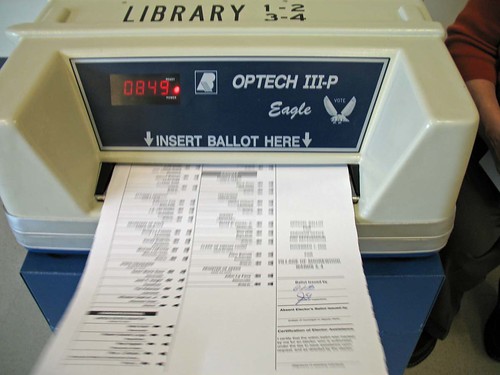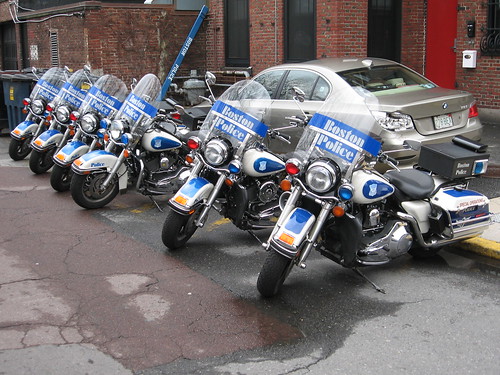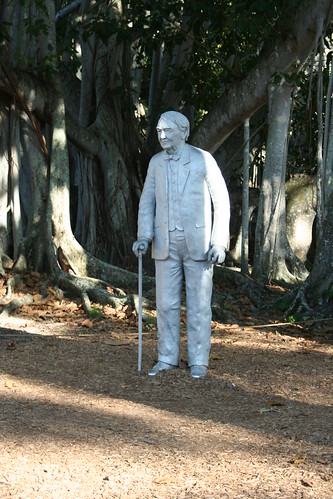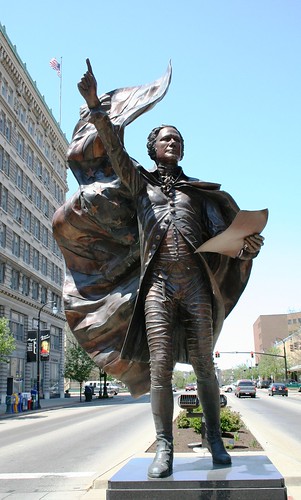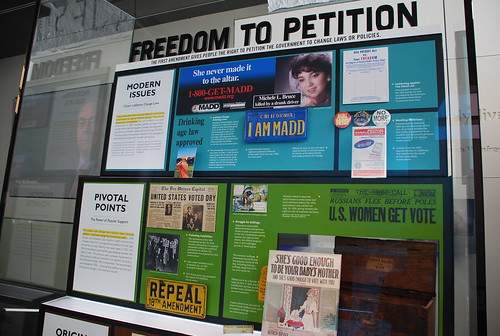
Boston's Chief City Planner, Kairos Shen,
ventured out to Brighton for the first time to meet with neighborhood residents on the topic of Boston College's Institutional Master Plan.
The university and neighborhood are locked in a battle over a proposed undergraduate housing plan which would put dormitories with 500 students on the former St. John's Seminary land (BC's new "Brighton Campus") -- as well as convert the newly-purchased apartment building at 2000 Commonwealth Avenue into an undergraduate, off-campus dormitory. In a written letter, the BC Task Force, a Mayoral-appointed community group advising the BRA,
called for revisions in BC's proposals to relocate the Brighton Dorms onto BC's main campus.
Shen proposed a possible solution to the master plan approval process -- which was akin to floating a trial balloon with neighborhood residents -- with the intention of breaking the logjam.
Shen was so smooth and polished, it took two hours for the residents to figure out that he was proposing basically to give BC every single thing they proposed in their master plan. Well, everything except for 350 of the 500 beds of housing on the Brighton Campus -- but those 350 might still end up exactly where BC wants them.
For the most part, residents didn't seem to like what they heard, with comments that became increasingly concerned as the meeting went on and they realized what was in Shen's proposal.
Shen promised to attend next week's meeting of the BC Task Force. I suspect he will hear an increasingly animated and negative crowd unless he shows up with a modified proposal that better addresses the Brighton Dorms and 2000 Comm Ave.
 Shen's Trial Balloon: A Phased Master Plan
Shen's Trial Balloon: A Phased Master Plan
Shen said that his mandate from Mayor Thomas Menino was to "see if there are certain elements of this [master] plan that can be advanced."
He broke up the master plan into projects which were mostly non-confrontational and could potentially be approved in the first phase of the master plan (although with modest modifications). More controversial projects would be put off into a second (or subsequent) phase, which would like entail one or more IMP amendments being proposed during the 10-year time period.
He listed those projects that he thought could go forward: parking expansion of Beacon Street Garage (next to football stadium); Shea Field Dorms; More Hall Dorms; Recreation Center; Brighton Fields (baseball and softball stadiums and intramural field); approval of a dormitory at 2000 Comm Ave; and Brighton Fields Garage (which may need modification to "minimize impact on the landscape").
On the hot-button issue of the Brighton Dorms on the St. John's Seminary site, Shen said "we feel that needs to be taken off the table." The room broke into applause.
Not so fast.
The audience applause was short-lived when Shen then back-tracked to say that "we feel like the 150 [beds in the Comm Ave dorm] has the potential of being more approve-able... with the right kind [of design]... but the 350 [beds at the interior site] we don't believe" can be approved. The 150 bed dormitory, sited on a granite out-cropping on the southern side of the seminary land site, was only off-the-table for about ten seconds.
As the meeting wore on, it was increasingly clear that Shen was floating a series of different ideas on the two dorms (one 150 and the other 350 beds), trying to see which, if any, of the trial balloons would take flight:
- "I believe this [scoping determination] needs to be expanded to deal with these last 350" beds, meaning that alternative siting would be considered.
- The idea would be to test some of the ideas about dorm location and design using testable metrics on buildings constructing in the first phase of the plan. The results would indicate where the 350 beds would go.
- Shen admitted that BC might well come back in several years and re-propose putting the 350 beds at the exact same site, anyway.
- He hypothesized that conditions might change within a few years, much as they changed when 2000 Comm Ave hit the real estate market, to create a game-changer that could provide an alternate site.
 Giving BC the Whole "Enchilada"
Giving BC the Whole "Enchilada"Shen's trial balloon gives BC everything they proposed in their IMP -- all the various dorms, conversion of 2000 Comm Ave, the recreation center, the athletics fields and stadiums -- everything except for 350 of the 500 dormitory beds on the Brighton Campus, although those beds could very well make their way back onto the exact same site. (BC's proposal was already, after all, to construct those 350 beds in years 8-10 of the IMP, so the dorms could even end up constructed at the same site on the same proposed timeline.)
There appeared to be a cognitive dissonance between Shen's trial balloon and his claim that "you're not being asked to eat the whole enchilada."
It's no wonder that Thomas Keady, Jr., Vice President for Governmental and Community Affairs at BC, said at the end of the meeting that "we found this meeting positive and headed in the right direction."
Leland Webster, a supporter of BC's proposal to construct dorms on the Brighton Campus as part of a 100% housing solution, didn't take to Shen's solution. "[The] 150 [bed] plan includes the possibility that 350 [students] could be left [living] in the neighborhood," Webster said. "[In the] final anaysis, it's got to be 100%."
While I don't normally quote myself at such meetings, many people applauded in apparent agreement with my comments:
BC's master plan inherently has a domino effect between athletics facilities, the recreation center, and undergraduate housing. Furthermore, [the solution to 500 beds on the Brighton Campus] may require additional stories on the More Hall site... the Mods site... a [new] building on the other side of the Mods site that they are not proposing to develop... more stories on the Shea Field site... revisiting renovating (or replacing on-site) Edmonds Hall.
All of these are relatively inseparable. They are part of the solution to the 500 beds on the seminary land. So I don't see why you can separate them now and hope to come back to find a solution -- because you are structurally creating a situation where there is going to be no other location for those [500] beds...
[I have heard] a lot of people [say] about this idea of the 150-bed [dorm]... that it is a bad idea because it is a toe-hold and more [dorms] will follow [in the seminary] in the future. And that is one of the reasons that people have been so opposed to even the smallest [dormitory] on the site...
I think you are violating your own... city planning principles here by taking a piecemeal approach to what is fundamentally a master plan process to last for ten years. And I think that it's going to make everyone here come back a year from now, three years from now, five years from now, eight years from now, and fight the exact same battles again and again. I think that you should solve the [undergraduate] housing problem, and solve it now.
Maria Rodriguez expressed the same sentiment: "Does [this proposal] mean that we will have to mobilize again" in five years?
A resident asked if Shen could produce a written document that the neighborhood could study in order to evaluate, and Shen said he would create one.
 A Fast-Track?
A Fast-Track?The trial balloon was not only Shen's way of trying to free the review process from the logjam, but also to fast-track city approval of it.
He let drop that they could conceivably go to the BRA Board on September 25th to ask for an October 16th public hearing and decision on the master plan.
Several comments were made that this sounded like a rushed process. From what I heard spoken Tuesday night there was no widespread acceptance of Shen's trial balloon, so his ambitious timetable appears unworkable.
Meeting With Everyone Except the Neighborhood... Until TonightTuesday night's meeting took place only four days -- only two working days -- after the close of the public comment period on BC's revised IMP filing with the city. The BC Task Force's comment letter was likewise dated Friday.
Shen was asked several times if the city considered all the public comments, particularly the task force's letter, in arriving tonight's proposal he presented. At first Shen pointed out that "many of the elements in the [task force's] letter were what we were already considering."
"I'm a little troubled that [4 days later] we're being asked to consider compromise," said Daina Selvig. What follows now "must be a much more robust and open" process than the one that appears to have transpired.
"There has not been sufficient consideration" of the public comments and task force's letter, said Sandy Furman.
But Shen went on to describe all the people with whom he had been working behind the scenes. He had met not just city officials from various departments and repeatedly mentioned the Mayor, but Shen also appears to have met with every BC official from stem-to-stern -- including a meeting with the President of BC, Fr. William Leahy, S. J., that Mayor Thomas Menino also attended.
Yet this was Shen's first meeting with Brighton residents. And, he admitted, he had not met once with the task force.
City Planner in Peculiar Role as Deal-Making PoliticianShen is a highly-respected city planner who was recently glowingly profiled in the Boston Globe Magazine piece titled, "The Shaper of Things to Come":
In a world where developers, architects, community activists, and politicians almost never agree on details, Shen has managed to earn a reputation as an intelligent, thoughtful, creative visionary with a knack for crafting compromise where once dwelled only conflict, animosity, and great gnashing of teeth.
His considerable polish and smooth presentation was on vivid display Tuesday night. Said one attendee afterwards, "[Chen's] a lot better politician than a lot of the guys in the back [of the room] here."
If you thought that city planners were dry and boring, then Shen will change your view.
While he took questions Tuesday night, most of the time was devoted to his presentation of the trial balloon. Issues of planning principles were mentioned here and there, but the presentation really was a strong sales pitch from someone who could easily run for elected office.
Mayor Menino has
previously and
repeatedly expressed his opposition to all 500 beds in both dorms, so this dance proposing approval of the 150-bed dormitory was a political two-step. He sent one of his best salesmen to pitch the idea, but it's not an easy sell. But Shen did have everybody going there, if just for an hour or so. It will be harder to understand how the Mayor will explain his potential flip-flop on this controversial neighborhood issue.
What's the difference between two dorms and a 150-bed dorm plus maybe 350-bed dorm? Lipstick.
Next meeting of the BC Task Force: Tuesday, September 16th, at 6:30 pm at the Brighton Marine Health Center.
Image of Oneonta Gorge, Logjam by Squash713, of balloon by OpenThreads, of enchilada by hackett, and of steamroller by Tellstar_Logistics, all provided through a Creative Commons license.
 Boston College students might have to find a different bar to drink at this weekend, because the Boston Globe reports that Mary Ann's is under threat of closure at midnight tonight due to its failure to install a sprinkler system.
Boston College students might have to find a different bar to drink at this weekend, because the Boston Globe reports that Mary Ann's is under threat of closure at midnight tonight due to its failure to install a sprinkler system.




